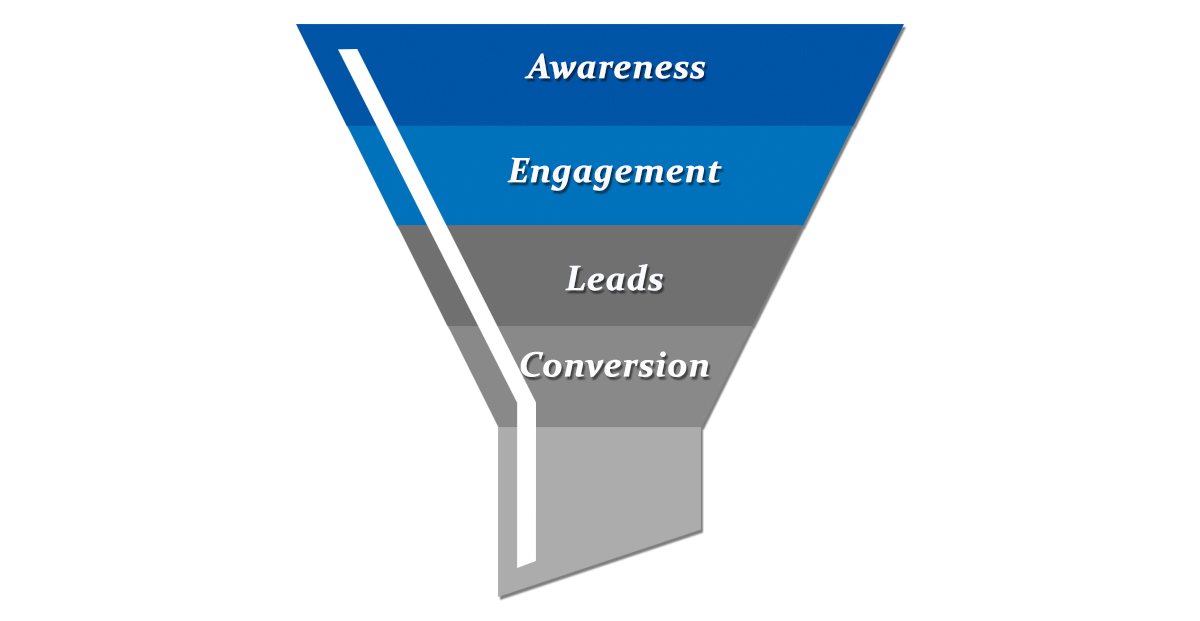
Strategic planning season is upon us, and with that, many companies are evaluating how they will spend their marketing dollars in 2017.
We’ve heard from several clients who want us to define the return on their marketing investment. One client asked us to quantify the direct correlation between their customer acquisition and the online marketing dollars spent.
When we receive these kinds of requests, we often need to take a step back and gain clarity. We’ve worked with this client for about 18 months. Their social media goals included establishing a social media presence that will reach their customers while remaining top of mind with those customers by sharing business and industry news and information. These goals are what we used to create their social media marketing strategy – and the quarterly reports, to-date, indicate that they been successful in achieving these goals.
If they want to quantify customer growth, we need to shift our marketing strategy. But, this is more challenging than it sounds. Fortunately, I read two timely blog posts that help me to explain why.
One post by Brooke B. Sellas established three types of goals associated with social media analytics: awareness, engagement and conversion. They function as a funnel with awareness, at the top, containing vanity metrics like fan and follower counts. Engagement, the middle tier, can include comments and shares, but it can also include reviews and check-ins. Conversions, the bottom tier, are what many would assume to be paid customers. But, as Brooke points out, monetary returns can be harder to track, so she said that she finds clients consider leads as a form of social conversion. Is a lead a form of conversion? Clearly, this is a gray area.
One statement from Brooke’s post rang like an alarm: “Truthfully, most of our leads come from social advertising rather than from organic social media posting.”
There’s truth to that statement. It’s challenging to have an expectation of leads (our assumed conversion) without spending money on the social platforms. Mark Schaefer predicted this years ago while I was still a champion for organic reach, because I had experienced it myself. BUT, that’s because I got in the game early. For companies who came later, and especially the ones entering now, they will have to spend some money to play.
This brings me to the second post that hit my inbox. It included an infographic, published by Vistage, with the results of their small business CEO survey. CEO’s are growing optimistic about the economy and they expect to increase their company revenue in the next year.
The charts, at the bottom of the post, indicate that 92 percent of the CEO’s polled use social media for their business.
The majority of that percentage use social media to increase brand awareness (tier one of Brooke’s three-tier conversion model). Clearly, business development does not work alone, thus the need for an overarching marketing plan that includes business development – both F2F and online/social marketing efforts.
Recruiting may sound surprising, but 54 percent of those surveyed encourage their employees to be active on social media to help build the company’s brand. It’s a well-known fact that prospective candidates value what current employees are saying about the company before making an employment decision (Hello, Glassdoor)! So, YES! Employees are your best brand advocates and they should make up a portion of your Alpha Audience.
Networking is the activity that I believe aligns most with social media marketing. In fact, I would consider it a metaphor for social media. Perhaps, by attending a networking event, you were looking for new people who could have an interest in your product or service (awareness/tier 1). Perhaps you want to stay top of mind or simply talk with your prospects or customers (engagement/tier 2). Perhaps someone has an interest in your offerings or would like refer business to you (lead/tier 3).
Attending a networking event fulfills all three tiers, assuming that leads constitute ‘conversion.’ How do I handle my clients’ request to quantify the direct correlation between their customer acquisition and the online marketing dollars spent? Sure, we can quantify awareness and engagement. But, we’ll be hard-pressed to quantify leads with no advertising dollars dedicated to social media (although, I’ll continue to recommend it). And if we can’t quantify leads, until we spend ad dollars, how we achieve customer acquisition?
Should we revise the tiers to include – awareness, engagement, leads, and conversion? Or, is it unrealistic to think that social media would generate new customers (aka converted leads)?
As I’ve said before, customer acquisition is an outcome, not a goal. But, if clients want a measurable return on their investment, how do we provide this return without finding a way to bridge the gap between goals and outcomes? From experience, it’s easy for a company to cut marketing activities when money is tight, especially if they cannot quantify a return. For retention purposes, it’s the job of social media marketers to find a way! Would we be on the right track to assume that conversion requires an integrated marketing plan, rather than a reliance on social media, alone? And, how, when less than 10 percent of our clients and prospects have a marketing plan?
Well, there’s no better time, than the present, to get on track for 2017. If you’re among the 90 percent without a plan, but want to quantify your marketing activities against dollars spent, stay tuned for our next blog with some guidance.
